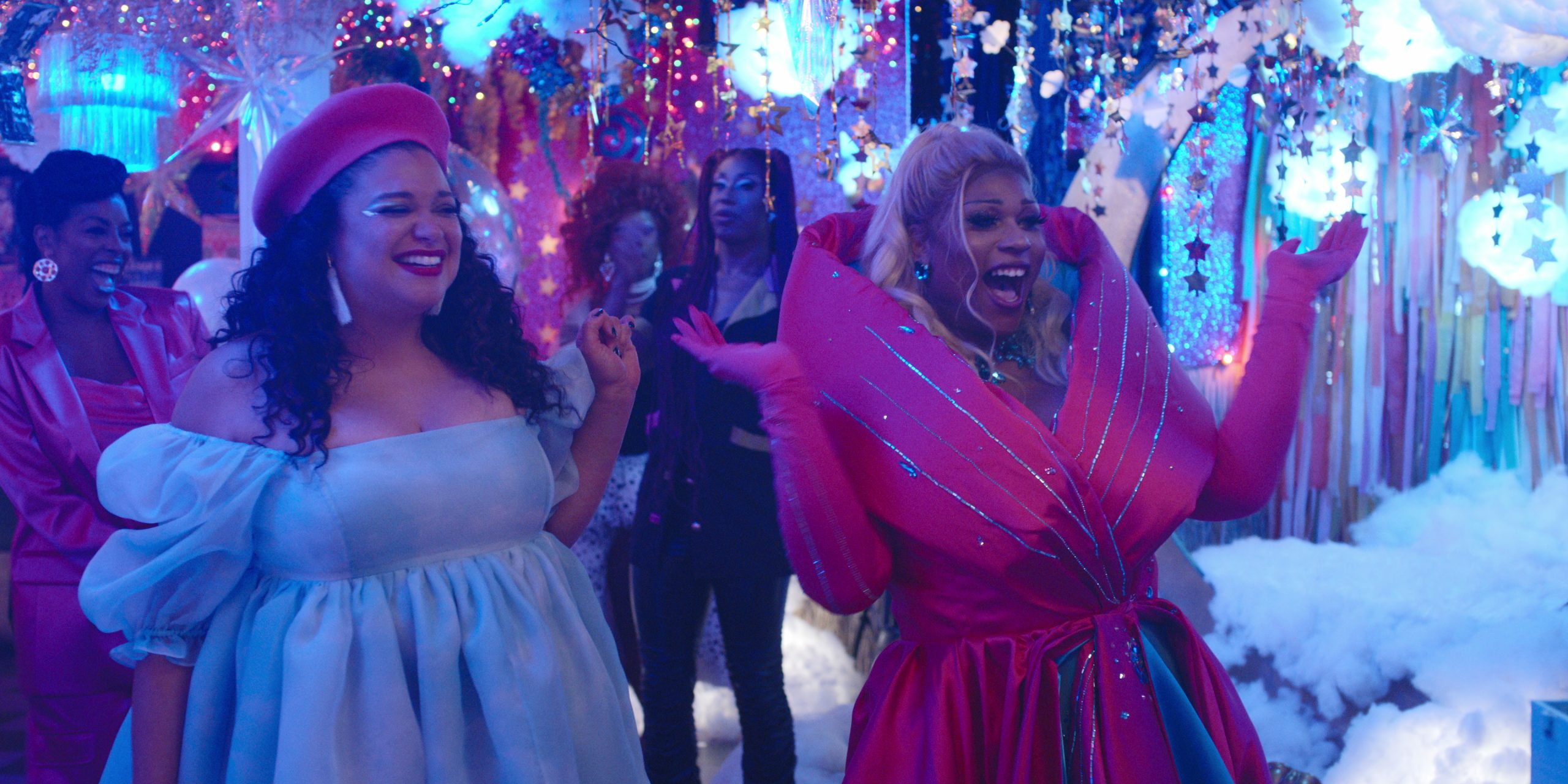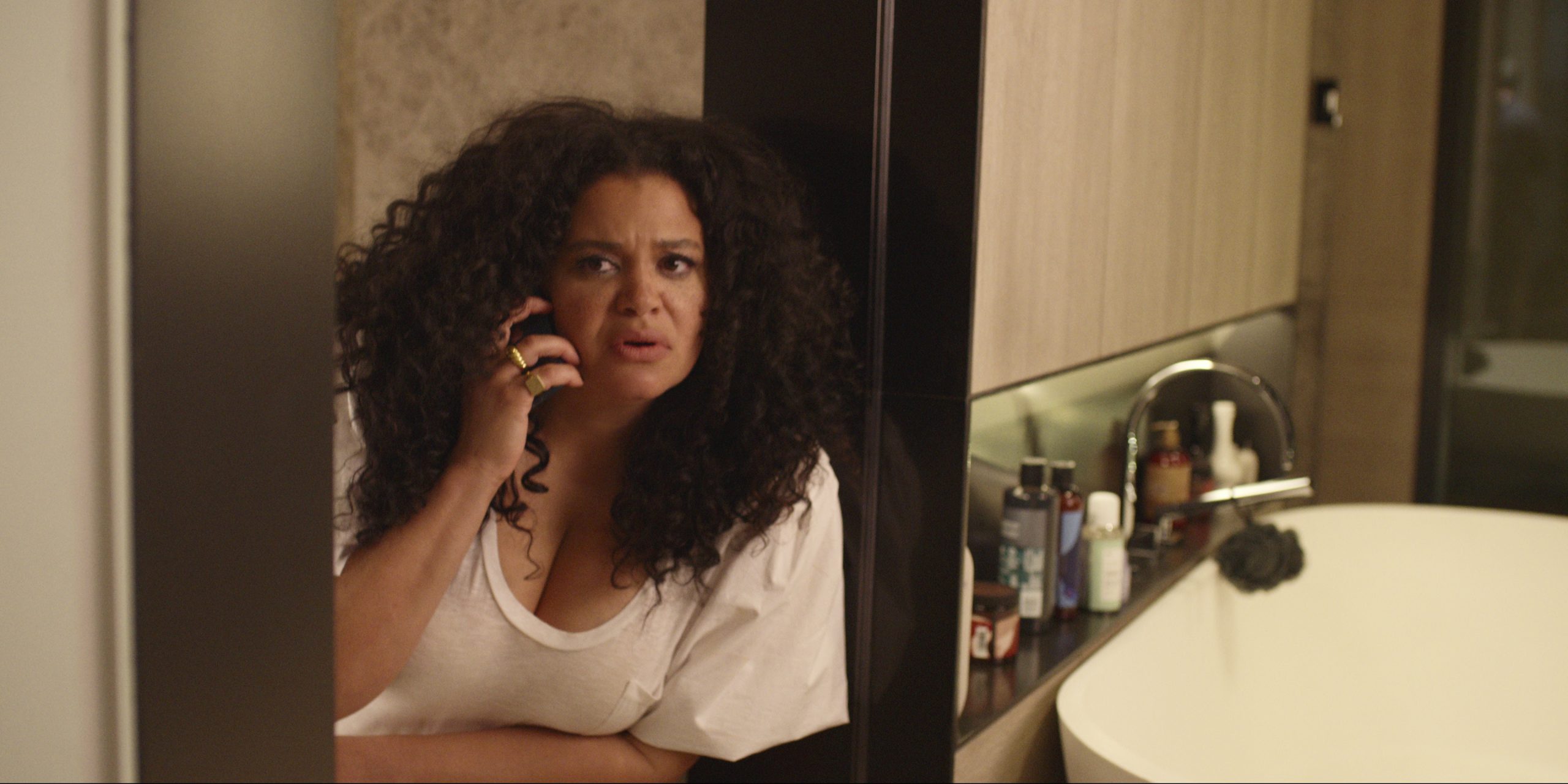‘Survival of the Thickest’ Review: A Sitcom That Understands What Diversity Should Be, but Falls Flat Beyond That

Survival of the Thickest. Michelle Buteau as Mavis and Peppermint as Peppermint in Survival of the Thickest. Cr. Courtesy of Netflix © 2023
Netflix’s Survival of the Thickest is yet another attempt to revitalize the half-hour comedy genre, starring a group of mid-to-late-thirty-year-olds trying to figure out how to survive in the big city and their struggles to find love and a purpose in life. You can probably think of a dozen different sitcoms that have tried to follow this premise, with certain variations, over the past two or three decades, and the truth is that Survival of the Thickest doesn’t stand out among that populated crowd, despite the fact that there isn’t a lot of competition these days in this sub-genre. (Its defense: that it’s actually an accurate representation of what life in New York City is like.)
The novelty of this show, much like The Big Bang Theory focused on fandom or How I Met Your Mother came close to breaking the fourth wall in its story-within-a-story approach, is that it is centered around Mavis (Michelle Buteau, who wrote the book of essays of the same name), a proudly Black and thick woman who is competing in the fashion design world while trying to move on from her cheating ex-boyfriend, who is also a co-worker of hers. As per usual, the show focuses on her daily life and that of her closest friends, who are also undergoing their own personal troubles.
Also of note, all of them are people of color, which is an issue that comes up more often than Mavis’ less-than-TV-average figure (but, on the flip side, not too rare for the average American citizen). Despite the title of the show, the main character is the only one to suffer from a thick silhouette; rather than this being an issue the writing hits us over the head with, it’s used as a dormant concern for Mavis, the voice in her head she can’t dial down and that adds to her overall insecurities in life. For once, I actually appreciated this unique approach to social commentary. There aren’t many specific lines or moments in the series where Mavis’ shape was brought up in a shameful way, yet there is no way those same scripts can be equally applied to a thin woman.

Survival of the Thickest. Michelle Buteau as Mavis in Survival of the Thickest. Cr. Courtesy of Netflix © 2023
Racism, on the contrary, is brought up slightly more often, but once again, the writing is smart to not remind us every five seconds that all lead characters are people of color. This is absolutely the way to go for diversity in Hollywood because it feels natural and it comes from the heart, something that appeared in the story but that is not necessarily driving the plot. Snippets of Micro-racism are more common in this series than the classic “white cops pulling over Black people for no reason” trope, though there are still a few of those throughout (as there should, because racism has many faces).
However, with all of that said, the truth is that Survival of the Thickest isn’t very funny, and its characters feel like sitcom clichés. The key to the success of sitcoms like the ones we mentioned above is that the characters felt like people we can’t see anywhere else but on that specific show. Even Girls, which isn’t exactly like other sitcoms, felt extremely fresh and unique because of its characters. Outside of Mavis (and that is based on her looks alone because her personality isn’t entirely new either), the rest of the characters do not feel like anything specific to this show.

Survival of the Thickest. (L to R) Anissa Felix as India and Tone Bell as Khalil in Survival of the Thickest. Cr. Vanessa Clifton/Netflix © 2023
Having only eight episodes to meet these characters also works against the series — the old cable model was ideal for sitcoms because it allowed for long seasons where we would get attached to the characters and eventually learn to appreciate even the lesser storylines just because our favorite people were in it. Survival of the Thickest doesn’t have that privilege, because it doesn’t have enough time for the characters to grow outside of their initial pitch. Think that series like Friends or How I Met Your Mother didn’t find their footing until two or three seasons in, and each of them was more than 20 episodes long.
All eight episodes of Survival of the Thickest are currently available on Netflix.
Miguel Fernández is a Spanish student that has movies as his second passion in life. His favorite movie of all time is The Lord of the Rings, but he is also a huge Star Wars fan. However, fantasy movies are not his only cup of tea, as authors like Scorsese, Fincher, Kubrick or Hitchcock have been an obsession for him since he started to understand the language of filmmaking. He is that guy who will watch a black and white movie, just because it is in black and white.






